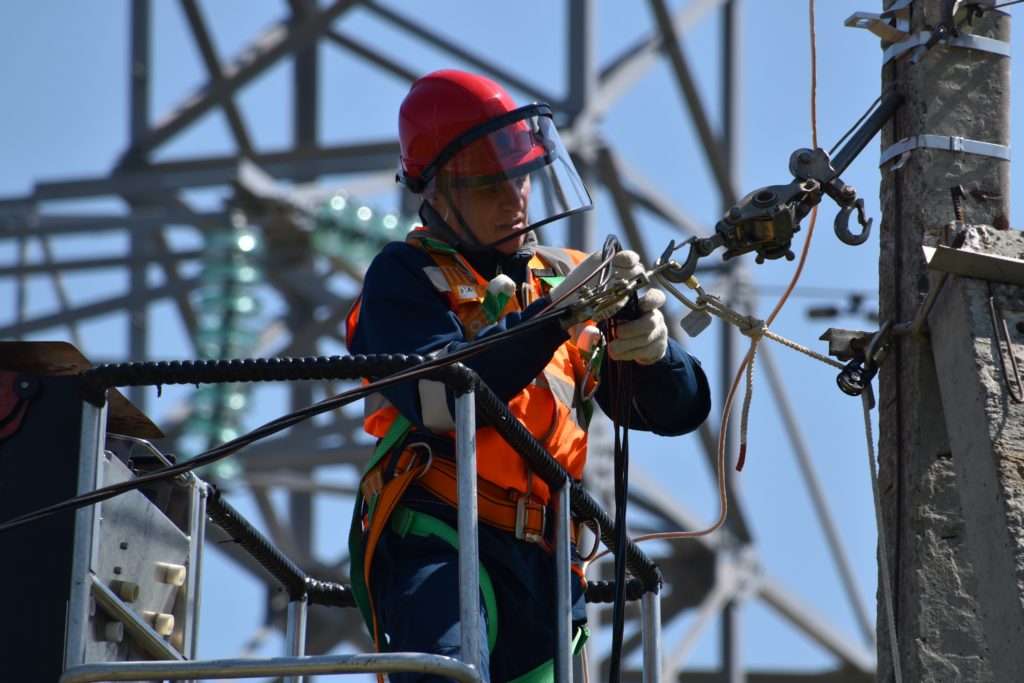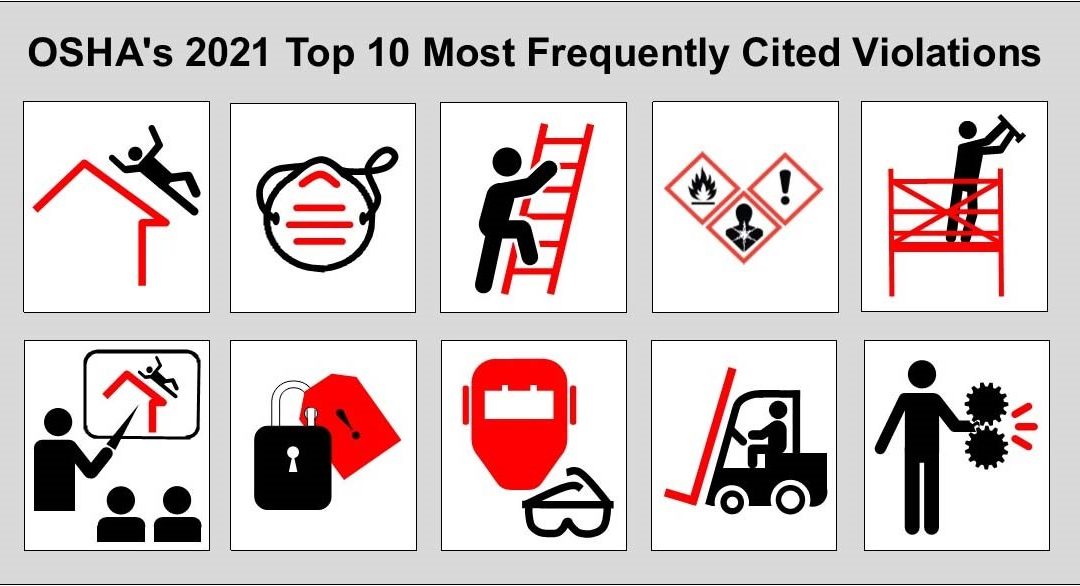Whether in construction, healthcare, manufacturing, construction, or office environments, workers’ compensation claims can result directly from unsafe worksite conditions. The Occupation Safety and Health Administration (OSHA) tracks violations of safety and health standards, which can lead to workers’ compensation claims.
Workers’ compensation policyholders who are aware of these common workplace safety violations can review and improve their work processes in light of the top safety violations, which may help lower their experience modifications. . The following top 10 violations are getting the most enforcement attention, and thus might need employers’ attention, too:
- Fall protection. For 11 years running, fall protection violations are the most-cited safety issue. Some 5,271 violations were issued to framing contractors, roofing contractors, masonry firms, and housing contractors, mainly for lack of protection near unprotected edges or sides on steep roofs or lesser-slopped surfaces. OSHA notes that fall protection issues exist across many work areas, including stairways, ladders, and elevated areas to name a few.
- Respiratory Protection. Respirators protect workers against insufficient oxygen environments, harmful dusts, fogs, smokes, mists, gases, vapors, and sprays. These hazards may cause cancer, lung impairment, other diseases, or even death. The main violations were for the absence of a protection program, failure to perform required fit testing, and/or a lack of medical evaluations.
- Ladders. Occupational fatalities caused by falls remain a serious public health problem. The US Department of Labor (DOL) lists falls as one of the leading causes of traumatic occupational death, accounting for eight percent of all occupational fatalities from trauma. Violations include structurally deficient ladders, a lack of side rails extending three feet beyond a landing surface, allowing workers to use the top step of a ladder, and the use of ladders for purposes for which they are not designed.
- Hazard Communication. Hazard Communication requires all employers to provide information and training to their employees about the hazardous chemicals to which they may be exposed at the time of their initial assignment and whenever a new hazard is introduced into their work area. The main causes were the lack of a written hazard communication program as well as inadequate training and/or failure to develop and maintain data safety sheets.
- Scaffolding. The primary companies cited by OSHA were siding, roofing, framing, and masonry contractors. The causes included improper or inadequate decking, failure to provide adequate scaffold support on a solid foundation, and lack of safety guardrails. Scaffolding accidents most often result from the planking or support giving way, or from the employee slipping or being struck by a falling object.
- Fall Protection Training Requirements. As distinct from fall protection, fall protection training requirements included faulty training that trainees were unable to retain and failure to retrain those employees. Additional causes were failure to give required fall protection training and failure to certify fall protection training in writing.
- Lockout/Tagout. This is an area of safety that refers to specific practices and procedures to safeguard employees from the unexpected startup of machinery and equipment, or the release of hazardous energy, such as electrical, mechanical, hydraulic, pneumatic, chemical, or thermal, during service or maintenance activities. Violations included not providing adequate training, a lack of establishing energy control procedures, failure to use lockout/tagout equipment, and failure to conduct evaluations of procedures.
- Eye and Face Protection. Most citations were for failure to use appropriate eye or face protection by employees who were exposed to flying objects, molten metal, liquid chemicals, acids, or caustic liquids. Another cause of violations was a lack of side protection.
- Powered Industrial Trucks. Each year thousands of injuries related to powered industrial trucks or forklifts occur in workplaces each year. The main reasons for citations were failure to operate safely, lack of refresher training and evaluation, absence of certification of training and evaluation, and failure to examine equipment for adverse conditions.
- Machinery and Machine Guarding. Any machine part, function, or process that may cause injury must be safeguarded. When the operation of a machine or accidental contact injures the operator or others in the vicinity, the hazards must be eliminated or controlled. The main causes were violations of the types of required guards, lack of guarding at the point of operation, not properly anchoring machinery, a lack of secure attachment of guards to machinery, and improper guarding of fan blades.
For a 10-year comparison of trends, not much has changed other than the ranking of violations. The top ways for employers to avoid safety issues are job hazard analyses, employees’ reporting of hazards and unsafe conditions, and employee training.

Attention to Workplace Safety Can Reduce Employee Accidents and Injuries
Your workers’ comp insurance premiums are based on your industry, the number of employees, your company’s payroll, and your claims history for the past three years.
A single claim won’t necessarily result in higher premiums for your insurance coverage, though it depends on the nature of the claim, the resulting medical bills, and any disability benefits. The more claims you have, and the higher the cost, the more likely your insurer will raise your workers’ comp premiums.
Your insurance provider will also consider your experience modification rate (EMR). Simply put, EMR is a benchmark the industry uses in setting premiums. It compares your claims experience to other businesses in the same industry or classification.
Other factors can include any filings, complaints, or fines from the Occupational Safety and Health Administration (OSHA), which could increase your premiums. Regular safety training and following safety guidelines for your industry can help reduce premiums.
A measured approach to health and safety can reduce accidents and the impact they have on your workers’ compensation coverage, your workers’ compensation premiums, medical expenses, and your company’s bottom line.
Have questions about workers’ compensation insurance for your business? Let’s talk.
About the Author
 John Kersey joined Healy Group in 2003 and has over 30 years of experience designing risk management programs for commercial clients. As a risk management advisor, John strives to build strong relationships with his clients and business partners to understand their needs better and provide the best risk management strategies for their unique situations.
John Kersey joined Healy Group in 2003 and has over 30 years of experience designing risk management programs for commercial clients. As a risk management advisor, John strives to build strong relationships with his clients and business partners to understand their needs better and provide the best risk management strategies for their unique situations.
Notes: Top10 Most Frequently Cited Standards. https://www.osha.gov/top10citedstandards


Recent Comments